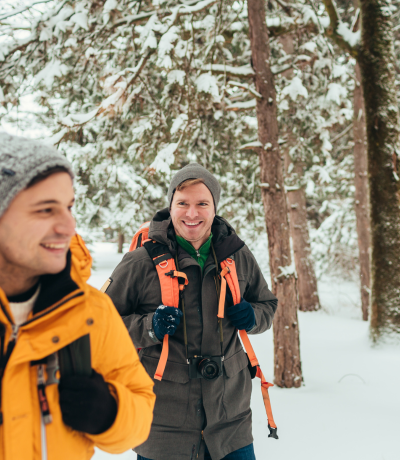6 Winter Travel Mistakes You Can Avoid
26 October 2023
Whether this summer was travel misery or not depends on who you talk to … like this couple who had to abruptly leave their vacation to attend a funeral only to get kicked off their flight. Turns out, the flight attendant involved had been written up for her attitude previously so it’s up to Frontier to fix. There are, of course, continuing stories of disruptive passengers making things difficult for everyone, and the counter reports that disruptive passengers have fallen (by 80%) since the highest in 2021.
Now that we’re all starting to think about winter trips, however, unruly passengers are not the only threat to your travel plans.
Winter travel is tricky, but you can avoid the worst blunders with a little pre-planning.
Here are six winter travel mistakes you’ll want to avoid this year.

Flying on peak travel days
Thanksgiving, Christmas, and New Year are busy times at airports across the globe.
In the US, the day before Thanksgiving is notorious for being the worst day of the year to travel, with the Sunday after a complete disaster.
Thanksgiving Day, however, is a different story same as Christmas Day. Flying on the holiday is a great way to save money, and enjoy easy security lines, and near-empty airports.
According to the TSA checkpoint data, these have been the five busiest travel days in 2023:
- June 16
- June 30 with 2.884 million passengers (a new record for the busiest air travel day ever in the US) *
- July 23
- July 28
- July 30
* For reference: the busiest travel day in 2019 was November 27 (the day before Thanksgiving) with 2.882 million passengers!
The following are predicted to be the busiest travel days around Christmas this year:
- Friday, December 22 (Christmas is on a Monday this year)
- Saturday, December 23
- Sunday, December 24 (Christmas Eve)
- Tuesday, December 26 (the day after Christmas)
Pro tip: The best days to fly around Thanksgiving in 2023 are Thanksgiving Day and the Tuesday after.
Choosing late-day flights
This is true of any season, but winter air travel is slightly more unpredictable due to winter weather. If you’re taking a late-day flight and the earlier flights are delayed or canceled, you’re caught in the airline catch-up chaos as passengers are bumped onto even fuller flights.
Book the first flight of the day whenever possible. These are generally on time because the travel day has just started (no pileups yet).
If your morning flight does get canceled or delayed due to bad weather, you stand a better chance of getting on another flight later the same day.
Not padding your schedule
Winter travel has a higher risk of delays and disruptions, so not padding your travel schedule means even higher risks.
Give yourself some wiggle room so the trickle-down effect of just one delay doesn’t shave an entire day off your trip.
Padding your schedule is particularly important if you are traveling through an airport that’s known for delays in the winter. The travel app Hopper crunched the list to rank the worst airports to travel into or out of through the end of February, and here’s the list by region:
Mountain West – Pitkin County Airport in Aspen and Eagle County Regional Airport in Vail, Colorado are the worst with between 22% and 35% of flights canceled or delayed in winter.
Northeast – Vermont’s Burlington International Airport, followed by Greater Rochester International Airport and Westchester County Airport are the worst. These regional airports report roughly 14-16% of flights disrupted in the winter.
North Central – Hector International Airport in North Dakota, O’Hare, and Minneapolis-St. Paul International Airports made the list with 21%, 12%, and 11% winter flight disruptions, respectively.
Notice many of the worst airports are smaller, regional airports in wintery areas. Recipe for problems.
Pro winter travel tip: Skip the travel messiness by booking non-stop flights whenever you can!
See How to calculate the perfect layover time for more tips if non-stop isn’t an option for your winter trips.
Checking your bags
Staffing shortages among airline workforces are primarily in the realm of pilots, mechanics, and air traffic controllers right now but there’s also a shortage of baggage handlers.
Baggage mishandling rates more than doubled from 2021 to 2022 according to SITA’s Baggage IT Insights Report for 2023. Bags that are transferred between planes have historically accounted for the majority of mishandled and delayed baggage.
The primary reason for air travel baggage delays is the lack of workforce, followed by the need to revamp baggage handling systems. Both issues will take time to reconcile.
The best way to prevent your bag from being mishandled or delayed is simply to take it with you. I typically don’t check a bag unless I’m on the last leg of my trip home. I don’t mind waiting awhile to do the dirty laundry after all.
Pro tips: If you have to check your bag, pop a tracker in it so you can help the airline staff find it if it’s lost. Also, take a photo of your bag at the airport before you check it in so you can show the staff what it looks like.
See six smart packing tips for winter weather travel for more helpful ideas.
Not having security expediting services
Never is TSA PreCheck more valuable than during congested times at the airport. The TSA estimates that 95% of PreCheck passengers wait less than 5 minutes in security lines. Plus, you can leave your shoes on, and you don’t have to separate laptops and liquids, speeding things up.
When you breeze quickly through the line try not to look smug.
Pro tip: No TSA PreCheck? See if your US airport has a free, fast pass reservation option to head to the front of the security line. Some do, some don’t.
Forgetting to monitor the situation
I get it. You’re huddled around a crackling fire enjoying that last cuppa before bed after a full day of travel fun. What could be better?
Checking the weather for the next day and the travel situation in general would be a good idea. If you know ahead of time that the weather will be bad, you can arrive early or try and change your flights the night before.
See how to check the weather before you travel (our most popular article!)
Pro tip: Be sure to save Fly Rights, the new consumer guide to air travel, so you know what the airlines are responsible for if your flights are canceled or delayed.
In the end, traveling during winter is a wonderful way to spend the season so don’t let winter travel worries dissuade you from getting out there and enjoying it!
Related topics
Damian Tysdal is the founder of CoverTrip, and is a licensed agent for travel insurance (MA 1883287). He believes travel insurance should be easier to understand, and started the first travel insurance blog in 2006.
